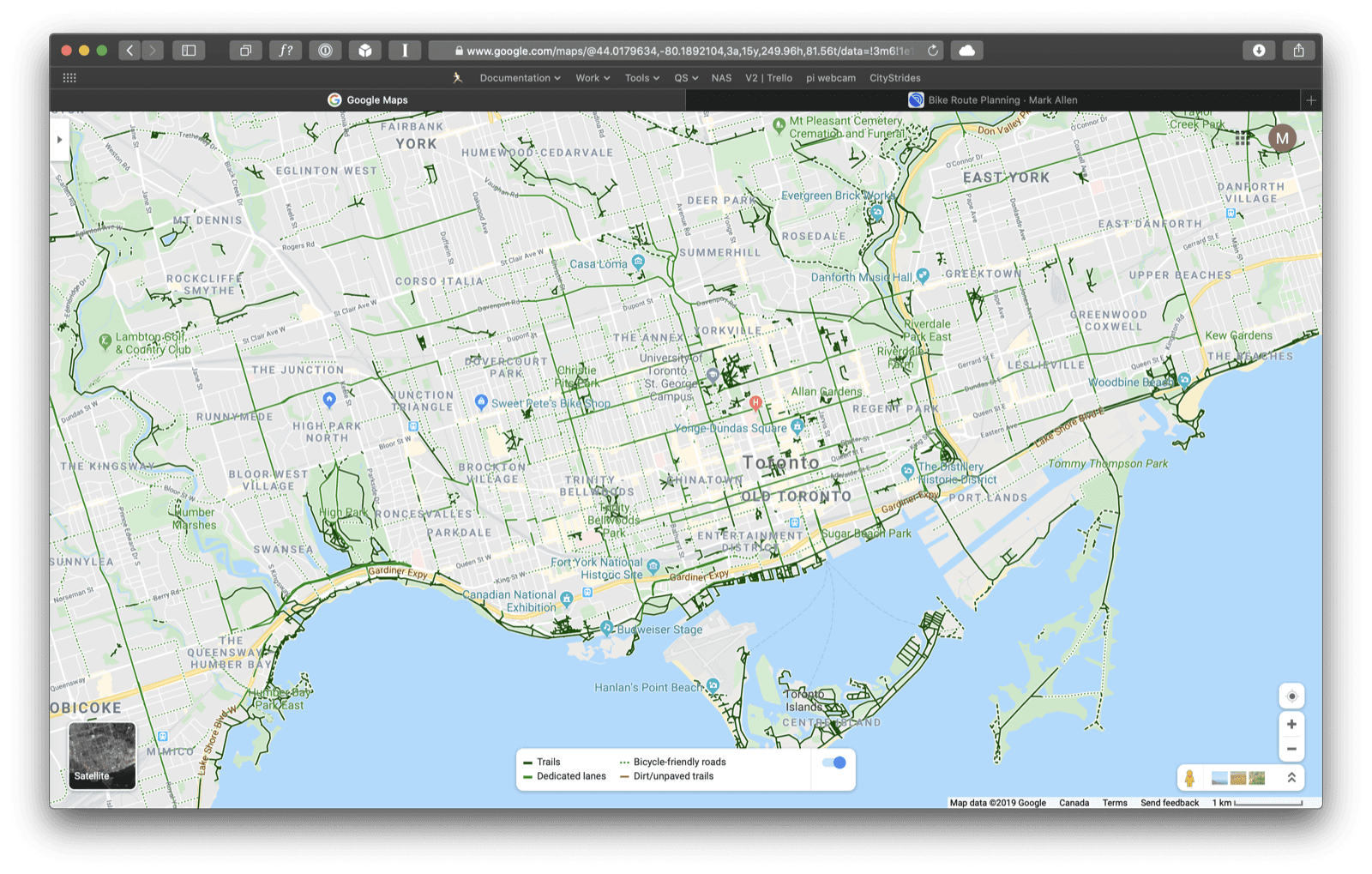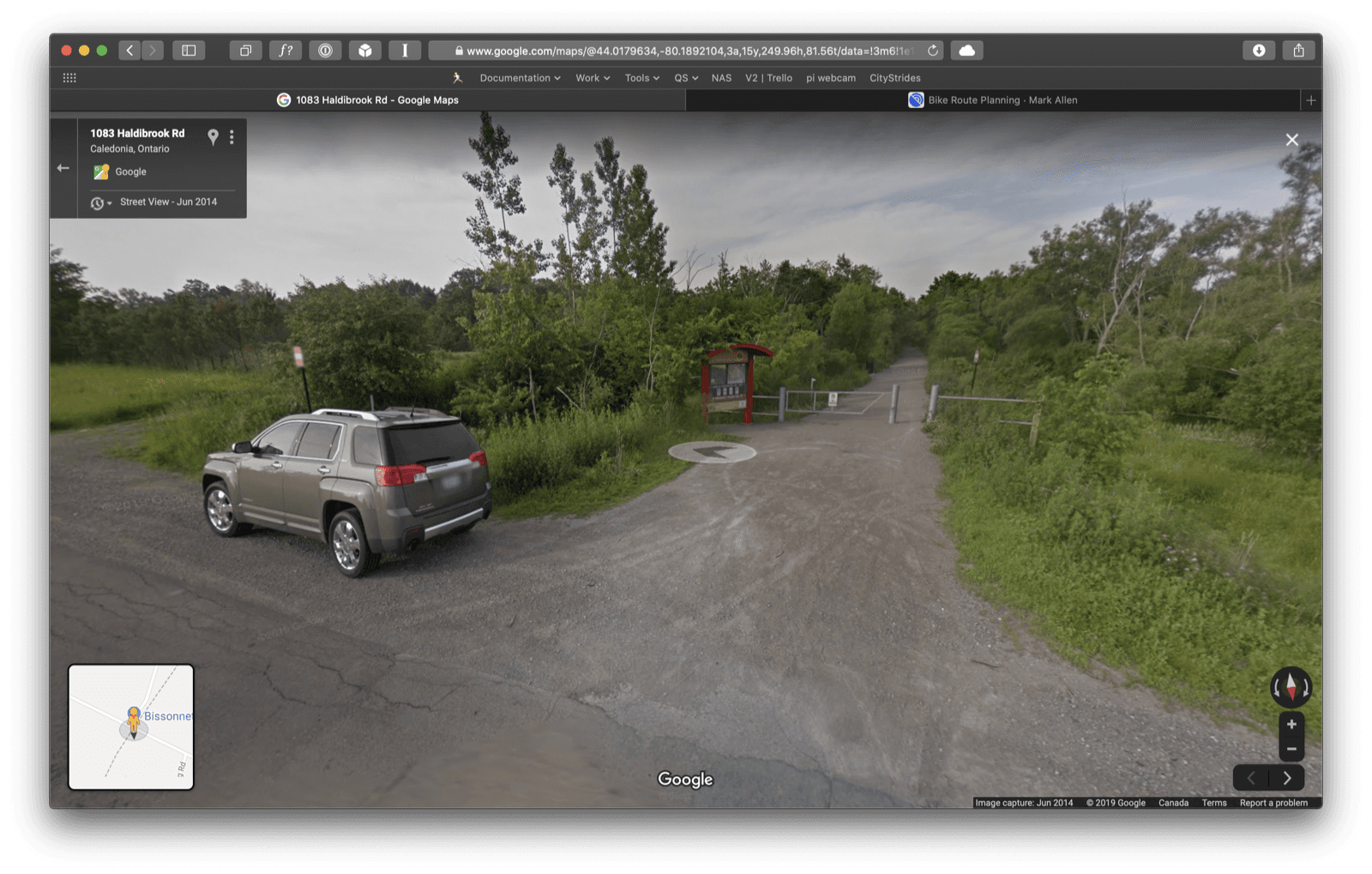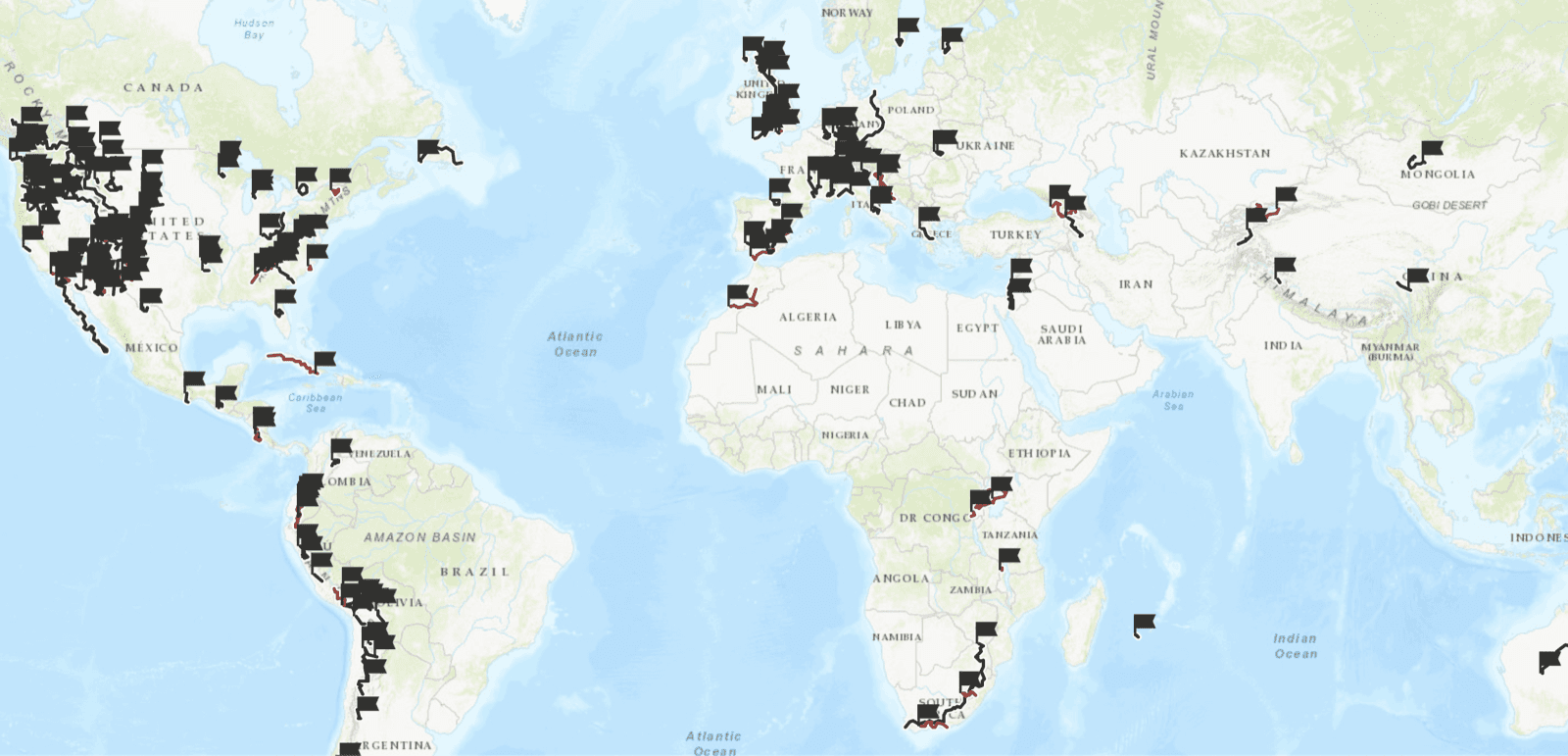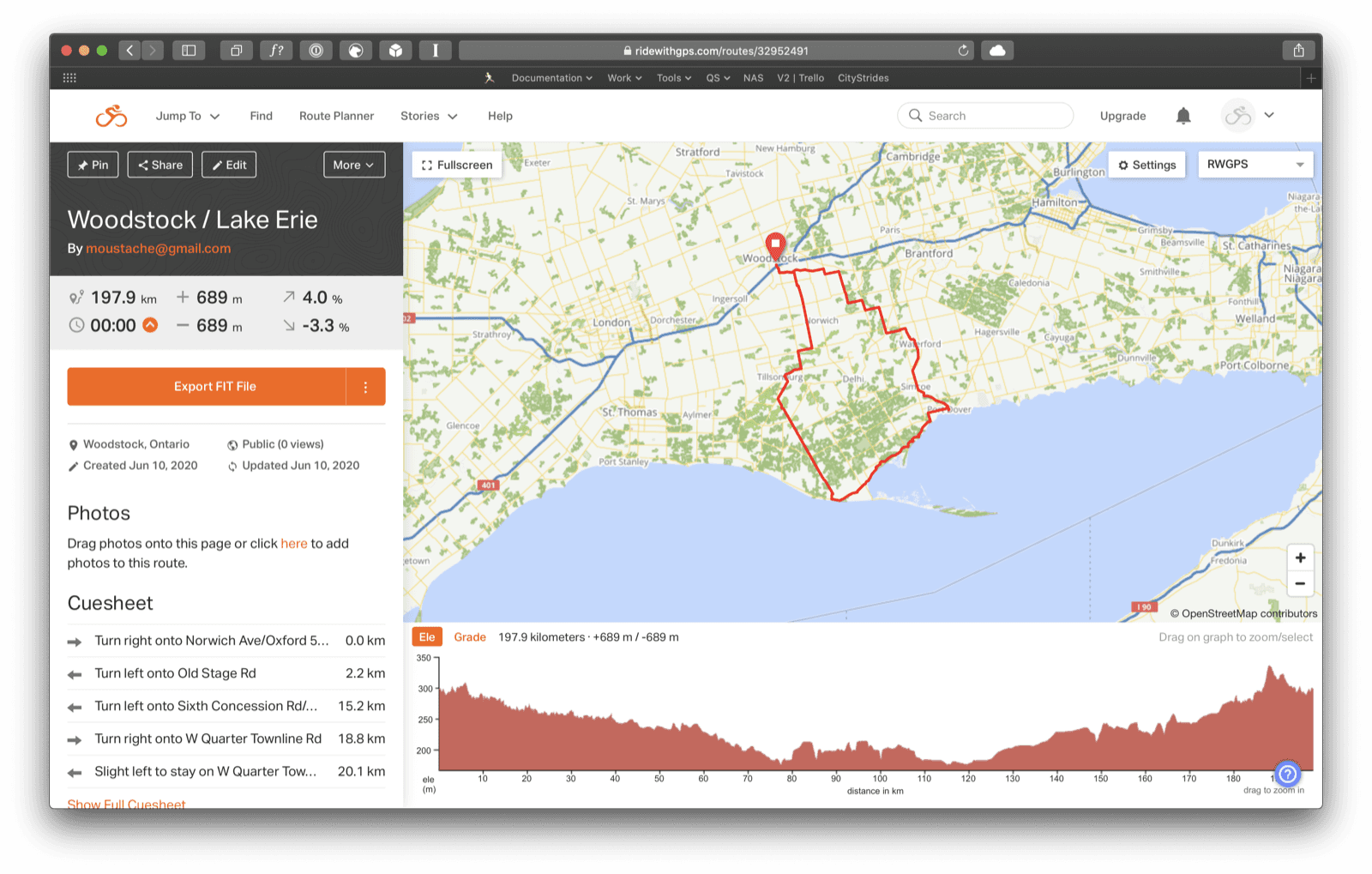Bike Route Planning
When I moved to Toronto, I found that it’s a great place to explore by bike, although it took me a little while to figure out the best ways to plan my trips.
This is an ongoing list with resources I use to plan day trips, overnighters, and bike tours.
Google Maps
Probably a no-brainer for everyone, it took me a long time to realize how good Google Maps can be for bike routing. The secret is in turning on the Bicycling data layer. To do that on your desktop, click the “more” menu icon in the search field on Google Maps, and you’ll see a “Bicycling” option. On the Google Maps mobile app, it’s under a button that looks like two stacked sheets of paper. Once you turn that on, you get two really useful views.
The first one is what you’d expect from Google Maps – a view of which streets are good for biking in a city. This is certainly useful, but the real magic for planning is when you start zooming out.
In this view, you can see promising routes to cover some long distances. This is how I discovered the Chippewa Trail which I used on an overnight camping ride to the north shore of Lake Erie. If I hadn’t found this rail trail on Google Maps I probably would have scouted for some decently quiet county roads using Google Street View.
Speaking of Google Street View, it’s also useful for inspecting trail conditions that don’t have street view details. For example, when I found the Chippewa Trail I wasn’t sure what kind of condition the trail was in. It could have been a jeep doubletrack, rough railroad gravel, fine gravel, fully paved, or some mix of the above. There was also some confusion online about how far south the trail actually extended. What I like to do is find areas where trails cross the road and check out the conditions at the crossing. Although it isn’t always perfect, this at least gives you a pretty good idea of what that section will look like.
Adventure Cycling Association Route Network
This network of routes is perfect for planning anything from a weekend trip to an epic cross-country journey. The Adventure Cycling Association began in 1976 when they mapped the TransAmerica Bicycle Trail to celebrate America’s bicentennial. Since then they’ve routed over 48,629 miles of routes in North America. The routes are mostly on low-traffic roads, and they’ll sell you printed or digital maps with all the information you’d ever need to have a great tour.
Related: The Bike Across Canada Route Network Facebook group has a crowdsourced version of a route across Canada.
Bikepacking.com Routes
If you want to do more gravel riding or get off-road completely, Bikepacking.com has you covered. They’ve got over 230 user-submitted bike packing routes from all over the world, varying in length from overnighters to over a month. You can also filter routes by bike type, so it’s easy to find the perfect trail for your skills and ambitions.
I really recommend checking out some of their routes; they are incredibly well reported and photographed. It makes for great reading even if you never plan on riding those trails. Next summer I want to do the COLT in central Ontario.
Automated Route Planning Tools
Strava, RideWithGPS and Komoot now all offer pretty good route building tools. I used Komoot’s tools to plan my Toronto to Montreal bike tour in 2019. They all work basically the same way - you can pick your starting point and destination(s), then an algorithm will try to create a route optimized for cycling. Each has some minor advantages over the other, and I use all three for different circumstances.
- Strava has heat maps based on their user-generated data. I find this useful when I’m trying to build a loop that starts and stops at the same place, and I don’t have a particular destination. E.g. “I want a 100km ride that starts and stops at my house and goes out into the country.” The one caveat is that this feature requires a Strava premium subscription.
- RideWithGPS is the only routing tool of the three that lets you see the Google Street View right from the route planning tool. This is so useful that I now usually start my route planning here and then use other sources as needed.
- Komoot was the first really good route planning tool, and can optimize routes based on the type of cycling you are doing (Road, Touring, MTB, etc). It also shows you a breakdown of how much of each ride is on various surface types, to make sure you’re not preparing to send your super aero time trial bike down any single track.
In my experience, Komoot does the best job of creating a sensible route on the first try, although with every tool it’s in your best interest to review the route and look for places the algorithms may have made mistakes. All of these tools make it simple to drag and drop your route to new roads, so creating the perfect route is much more painless than it was a few years ago.
Randonneuring Clubs
A recent discovery for me. Randonneuring events usually cover 200-600km, and your local club’s website likely has a library of vetted routes. Here’s the route archive for Toronto chapter of Randonneurs Ontario, for example. Many clubs also post their routes to a site like RideWithGPS, so it’s easy to copy a route and download it to your Garmin.
It’s also worth mentioning that the folks at your local bike shop are probably full of good routes, but I’m sure you’ve already figured that one out.
If you’ve got a great way to find good bike trip routes, let me know!
Written by Mark Allen, a product manager and designer currently based in Toronto. Say hello on Bluesky or send me a message.






